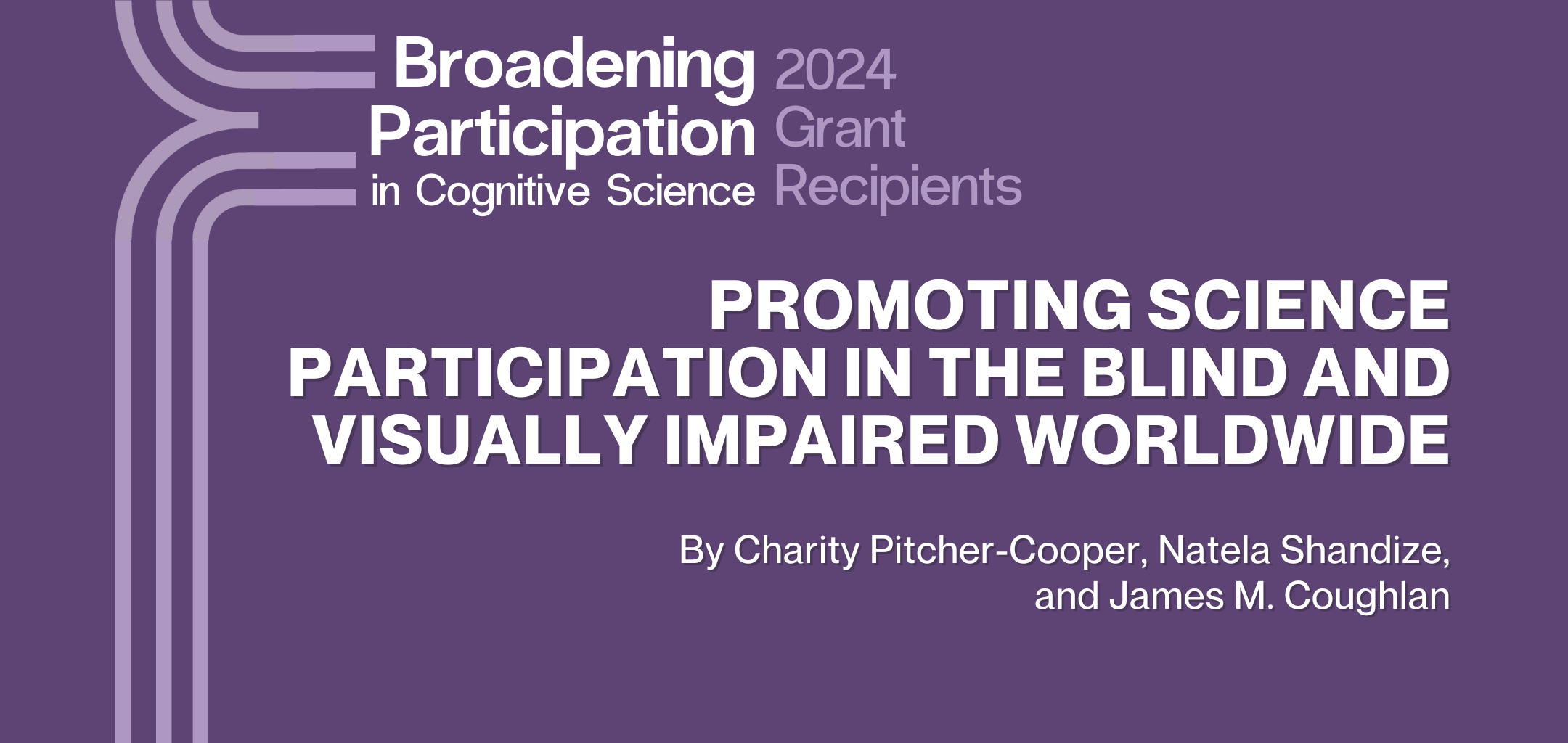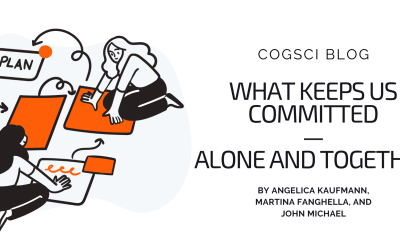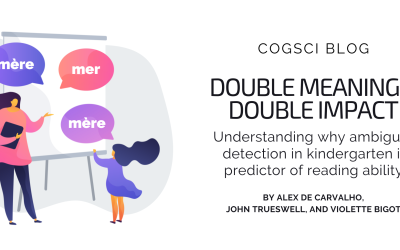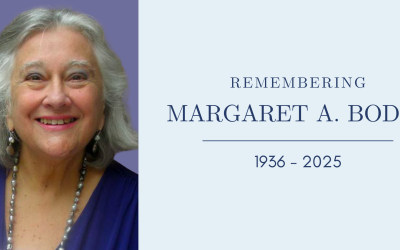By Charity Pitcher-Cooper, Natela Shandize and James M. Coughlan
Smith-Kettlewell Eye Research Institute (SKERI)
The goal of our project is to promote science participation by people who are blind and visually impaired (BVI) by revamping the Smith-Kettlewell Technical File, a technical magazine created for blind people by Bill Gerrey, a SKERI engineer who was blind from birth.
The Technical File was conceived by and for BVI researchers and engineers as a reference that provides extensive guidance for adopting and performing research and engineering tasks for BVIs. It describes practical tips enabling BVI makers to make devices like carpenter’s levels and oscilloscopes usable to BVI individuals through audio sonification, and to build, test and repair electronic devices independently using non-visual approaches to electronic soldering and the use of diagnostic tools like sonified electrical continuity testers. The legacy Technical File archive is currently available on the SKERI website.
Thanks to funding from the Broadening Participation in Cognitive Science Initiative, we are in the process of creating an Enhanced Technical File (ETF) with new content added to it on an ongoing basis to broaden its reach to a variety of topics related to Cognitive Science. This content will reflect the quickly evolving needs of scientists, engineers and makers in the 21st century. Studies of blindness and low vision span multiple fields, including neuroscience (e.g., cortical reorganization, navigation and shape processing, multisensory processing/sensory substitution), education (non-visual learning aids and resources, non-visual learning and reading), linguistics (braille, non-visual communication) and tactile/haptic user interfaces (refreshable braille and tactile displays, tactile maps and 3D models with touch-enabled audio labels). Currently, BVI scientists are scarce across disciplines focusing on blindness and low vision, where their input is absolutely essential for innovative solutions, user-centered research and technology designs (which promote universal design principles for maximum usability to all), and to combat sighted bias. Accordingly, the project will provide access to research and engineering tools necessary in most fields related to Cognitive Science that are especially difficult for BVI students to acquire in traditional educational settings. For example, tutorials focused on programming will be directly applicable to work in AI, creation of non-visual study materials will enable BVIs to contribute to advances in education (drawing on SKERI’s long-standing collaborations with Teachers of the Visually Impaired such as Dr. Yue-Ting Siu, Northwest Center for Assistive Technology Training Program Coordinator at Washington State School for the Blind), and non-visual exploration of data (e.g., fMRI images) are highly relevant in neuroscience. The ETF will facilitate BVI participation across disciplines.
Once launched, the ETF portal will have enhanced web functionality, multimedia features, and up-to-date content for BVI scientists, researchers, and engineers. The web interface will focus on screen reader compatibility, with a hierarchical data/page structure, indexing for ease of navigation, and rich multimedia integration. The ETF will be incorporated with educational and assistive technology programs at SKERI to make these programs available to a wide audience. Specifically, an ETF entry will be created for the topics covered in all five years of the SKERI Summer Institute designed to train BVI students interested in data skills necessary for STEM (science, technology, engineering and mathematics) careers; to date, courses have focused on learning to program in the R and Python languages to enable non-visual interaction with datasets.
We have already begun discussing topics for new ETF content with prominent BVI STEM professionals to promote the ETF and provide additional content, making the ETF a hub of non-visual access to science worldwide. These professionals include Dr. Joshua Miele (Amazon Lab126, electronics, non-visual media, technology), Brandon Biggs (Georgia Tech and SKERI, non-visual auditory map interfaces), Dr. Sile O’Modhrain (University of Michigan, refreshable tactile and braille media), Dr. Nick Giudice (University of Maine, multimodal information access), and Dr. Yue-Ting Siu (Washington State, non-visual educational materials), who are all members of the broader SKERI research community.
By early March 2025, a first version of the new ETF website will be available with the enhanced web functionality and format needed for BVI viewers.
We have also engaged in the following dissemination and outreach activities related to the ETF:
Drs. Joshua Miele and James Coughlan will present “Blind Innovators for the Blind: The Bill Gerrey Model” at the CSUN Assistive Technology Conference in March 2025. Dr. Miele, a renowned blind researcher who trained with Bill Gerrey at SKERI, will share how Gerrey’s hands-on approach to creating access technology was designed specifically with blind people in mind. Gerrey’s work wasn’t just about solving his own challenges – it was about helping other blind professionals, students, and hobbyists too. Many of his techniques, detailed in the original S-K Technical File, serve as a great model for future projects that aim to make technology easier for everyone to access.
Charity Pitcher-Cooper has been actively working to promote inclusivity in science and recently submitted a presentation titled “Building Inclusive Science: Teaming with Blind and Low Vision Researchers in STEM.” This presentation was selected for the 2025 NARRTC (National Association of Rehabilitation Research and Training Centers) conference, which will focus on improving community, health, and employment outcomes for people with disabilities. Charity’s work highlights the importance of involving blind and low vision researchers in STEM fields, helping to create a more inclusive and diverse scientific community.
Dr. Natela Shanidze has submitted an abstract for the 2025 Cognitive Science conference called “Non-Visual Science: Teaming Up with Blind and Low Vision Researchers for Inclusive STEM Resources.” While the topic is similar to Charity Pitcher-Cooper’s upcoming presentation at the NARRTC conference, Natela’s abstract will focus on a different audience – students and researchers in Cognitive Science. The presentation is meant to both raise awareness of current barriers in STEM for BLV individuals and to promote ETF resources amongst the Cognitive Sciences community. She’ll highlight the unique challenges that blind and low vision researchers face when interacting with STEM materials, and share ideas for how we can break down these barriers to make science more inclusive for everyone.
The Cognitive Science Society’s Broadening Participation Grant is now entering its third year of funding new initiatives to increase global participation in Cognitive Science. The recipients of this grant represent a broad scope of innovative initiatives aimed at encouraging participation in the Cognitive Sciences through interdisciplinary outreach programs, projects, and events. Participants in these programs represent diverse identities, cultures, and geographical locations. As the Cognitive Science Society’s Outreach Committee prepares our call for the third annual Broadening Participation Grant (coming soon!), we are delighted to provide updates on each of our 2024 grant recipients.






